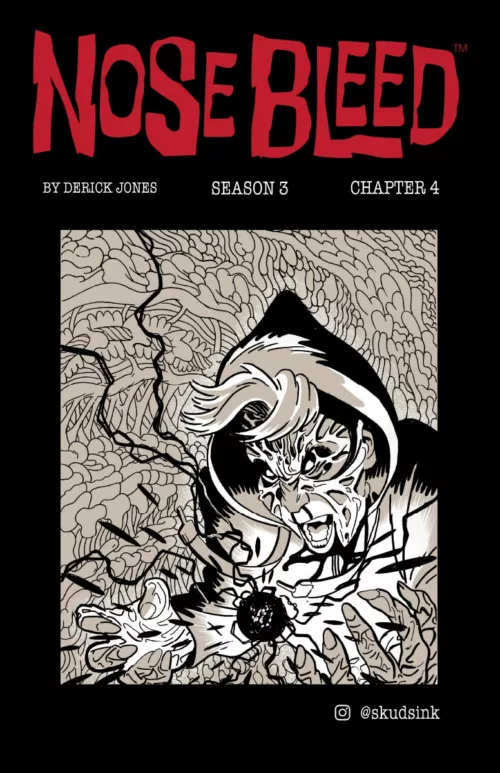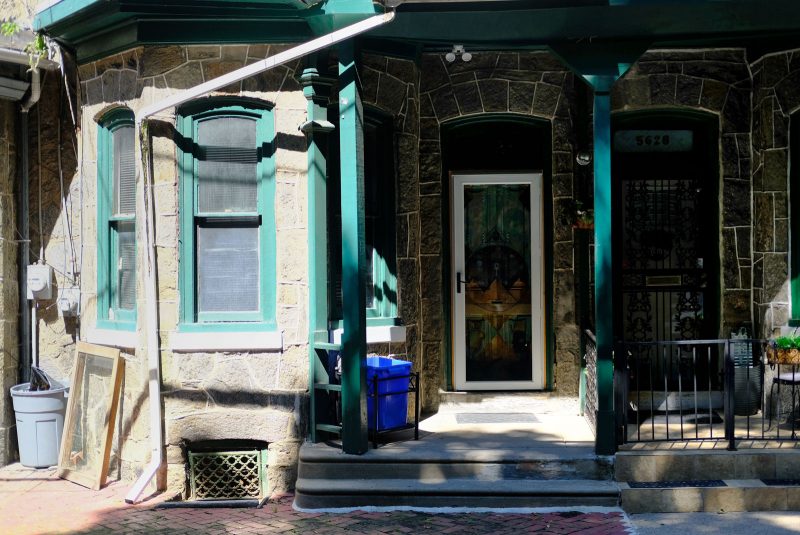
On a recent Wednesday morning, I biked to a stone row home tucked into a quiet pocket of Germantown. The house was pretty but unassuming: built from sparkling Wissahickon schist in the Second-Empire style, it boasted bay windows, green trim, and a small porch. The only thing indicating that 5626 Morton St. is a special address—that it was once home to the intergalactic jazz visionary Sun Ra, and still is home to Marshall Allen, the 98-year-old bandleader of the Sun Ra Arkestra—was a mural, painted on the front door, of Egyptian pyramids and distant galaxies.
There was a reason for my sight-seeing trip. On May 13, 2022, the Philadelphia Historical Commission added the Sun Ra house (also called the Arkestral Institute of Sun Ra) to the Philadelphia Register of Historic Places. In the days following, several outlets published articles celebrating the designation (Fader, Pitchfork, Philly Voice).
Initially, I was gratified to see the site’s significance officially recognized—and I was a little embarrassed that, even though I have lived in Germantown my whole life and often passed within a block of the house while walking to school, I never knew that the Sun Ra house was there. But as I read more headlines and learned more about the history of the house, I became less certain that the Register held the answer to the problem of preserving Philadelphia’s rich but endangered jazz history.
Sun Ra, born Herman Blount in 1914 in Birmingham, Alabama, was a pioneer of far-out jazz who influenced generations of musicians, from Sonic Youth, whom he opened for in Central Park, to Solange and Erykah Badu. According to the lore, Sun Ra arrived on Earth from outer space. He and his band, the Arkestra, performed their unique brand of free jazz in colorful costumes that mixed celestial imagery with ancient Egyptian symbols, creating a time-bending aesthetic that would shape the Afrofuturist movement.
In 1968, Sun Ra and his bandmates moved to the house at 5626 Morton St., which was owned at the time by the parents of Marshall Allen. The house quickly became the site of prodigious musical creation. Allen described it as a “commune,” where the members of the Arkestra lived organically and collaboratively in the style of their music.
Sun Ra lived in the house until 1992, when he returned to Birmingham to be near family before his death the following year. Allen and several other members of the Arkestra continue to live and make music in the house.
Sometime in 2020, the basement of the Sun Ra house collapsed into the sub-basement. “One day it just—schlkup—fell in,” Allen told WHYY. In early 2021, the Robert D. Bielecki foundation, which supports music- and arts-related causes, committed $7,000 for repairs, and a Germantown contractor, Frank Reis, owner of Walnut Street Construction, volunteered to oversee the project pro bono. The basement was fixed, but the house had other problems like plumbing issues and water damage that, according to Allen, were too expensive to repair.
Historic designation can help, but it can hurt, too
Properties can be nominated for inclusion on the Philadelphia Register of Historic Places by anyone, not just their owners. This March, a year after the basement repairs, the Historical Commission itself nominated the Sun Ra house. The nominating documents supply a well-researched biography of Sun Ra in order to demonstrate that 5626 Morton St. is “associated with the life of a person significant in the past,” one of the criteria for historic designation. The documents do not mention the recent collapse. Their author was certainly aware of the collapse—an article about it is listed as a major source—but officially, it is irrelevant; only the exteriors of most historic buildings are within the purview of the commission.
With only seven employees and a meager budget, the Historical Commission cannot offer much help to owners of historic properties beyond advice. The Philadelphia Historic Preservation Task Force admitted in a 2018 report that at a local level, “there are no financial, zoning, or streamlined-process incentives specifically designed to encourage property owners to designate, maintain and preserve their historic properties.”
Faye Anderson, founder and director of the public history project All That Philly Jazz, told me in an email that “designation does not come with financial assistance to maintain or rehabilitate the property.” The only benefit, she said, is protection from demolition, and even that is not absolute. While demolitions of historic properties are rare—the commission approved only 38 in the past 32 years—they do still happen.
Nevertheless, when the Sun Ra house was added to the Register in May, news articles described the designation not just as a win for its preservation, but as an all-out victory. The subhead on a Pitchfork article read, “The legendary building is listed in the Philadelphia Register of Historic Places, ensuring its protection and upkeep.”
PhillyVoice was Polyannaish, too, writing that the designation will guarantee “that the property gets the ongoing maintenance and care it needs to be preserved.”
In fact, far from assisting with maintenance, the listing of the Sun Ra house on the Register could make future repairs more difficult. Any significant alterations to the exterior of a building on the Register must be first approved by the commission. And in order to be approved by the commission, proposed changes must preserve the building’s historic character, a potentially costly requirement.
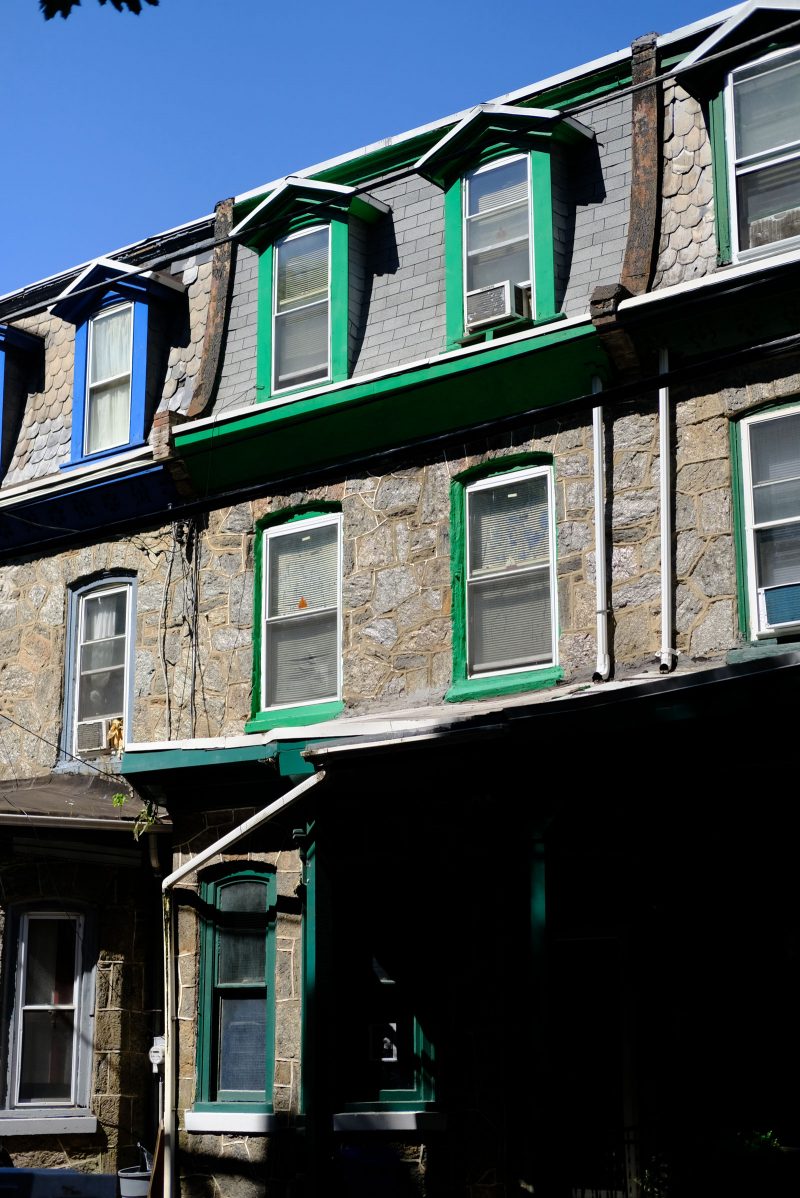
“Doing exterior repairs can be quite a bit more expensive when a house is on the historic register,” said Frank Reis, the contractor who oversaw the basement project at the Sun Ra house, in an email. On most houses, for example, an old window could be replaced by a vinyl one. But for a house on the Register, replacing the same window with a historically accurate one could cost 10 times as much, Reis estimated.
Had the basement collapse happened after the Sun Ra house’s addition to the Register, nothing would have been materially different. Allen and the other residents would not have gotten any financial help from the commission, but the repair wouldn’t have been more expensive, either, because the basement is on the building’s interior.
Despite these complications, the historic designation itself is a good thing for the Sun Ra house. At the very least, it provides some protection from demolition and has attracted attention to the house and its story.
What’s damaging is the assumption that listing a property on the Register is enough. Were a prospective donor to read that the Sun Ra house has been designated a historic landmark and will therefore be preserved in perpetuity, they may put their money elsewhere. If, instead, they knew that the historic designation was merely papering over the cracks, they might be more inclined to help secure the house’s future.
Another jazz landmark under threat
After staring for a while at the mural on the front door, I left the Sun Ra house and biked under an intense June sun towards another unassuming row home with a storied past. The ride was longer this time; 1511 North 33rd St., Google Maps told me, was 5.5 miles away by bike.
Five miles in, the route took me past Strawberry Mansion, the historic house in Fairmount Park that gives the surrounding neighborhood its name. Built by judge and abolitionist William Lewis as a summer home around 1789, Strawberry Mansion is encircled by immaculate gardens and signs warning potential trespassers of 24-hour surveillance.
After the house was sold to the Fairmount Park Commission in 1867, it became a succession of dining places until its restoration was begun in 1926 by a group of “leading city women,” as described on the mansion’s website, who received help from the mayor, the director of the Philadelphia Museum of Art, and the commissioner of Fairmount Park.
Strawberry Mansion has a blue historic marker out front, but it is not on the National Register of Historic Places, nor is it a National Historic Landmark. Despite that, the house remains in pristine condition inside and out. Historic registers won’t fund restorations and repairs, but if Strawberry Mansion is any indication, friends in high places—mayors’ offices, art museums, parks departments—just might.
After five more minutes on my bike, I came to another blue historic marker. Posted in front of 1511 North 33rd St., on the edge of the Strawberry Mansion neighborhood, it read, “JOHN W. COLTRANE (1926-1967).”
Coltrane bought the house at North 33rd St. in 1952 and lived there for six years, though he would own the property for the rest of his life. His mother lived there permanently, as did his cousin Mary Alexander and, for a time, his wife Juanita Austin, nicknamed Naima. (Coltrane immortalized both women on his landmark album Giant Steps, which includes the tracks “Cousin Mary” and “Naima.”)
While he lived in the house, Coltrane played in the bands of Duke Ellington and Miles Davis; recorded his first solo album, Coltrane; and famously had a religious awakening in the process of breaking a heroin addiction, setting in motion the musical-spiritual journey that culminated in A Love Supreme. Needless to say, it is an important address.
The city officially recognized the house’s significance in 1985, when it was added to the Philadelphia Register of Historic Places. In 1999, the house became a National Historic Landmark, one of just 67 in a city crowded with historic sites of international renown. There are no more registers to which the Coltrane house can be added, no loftier historic designations that it can be awarded.
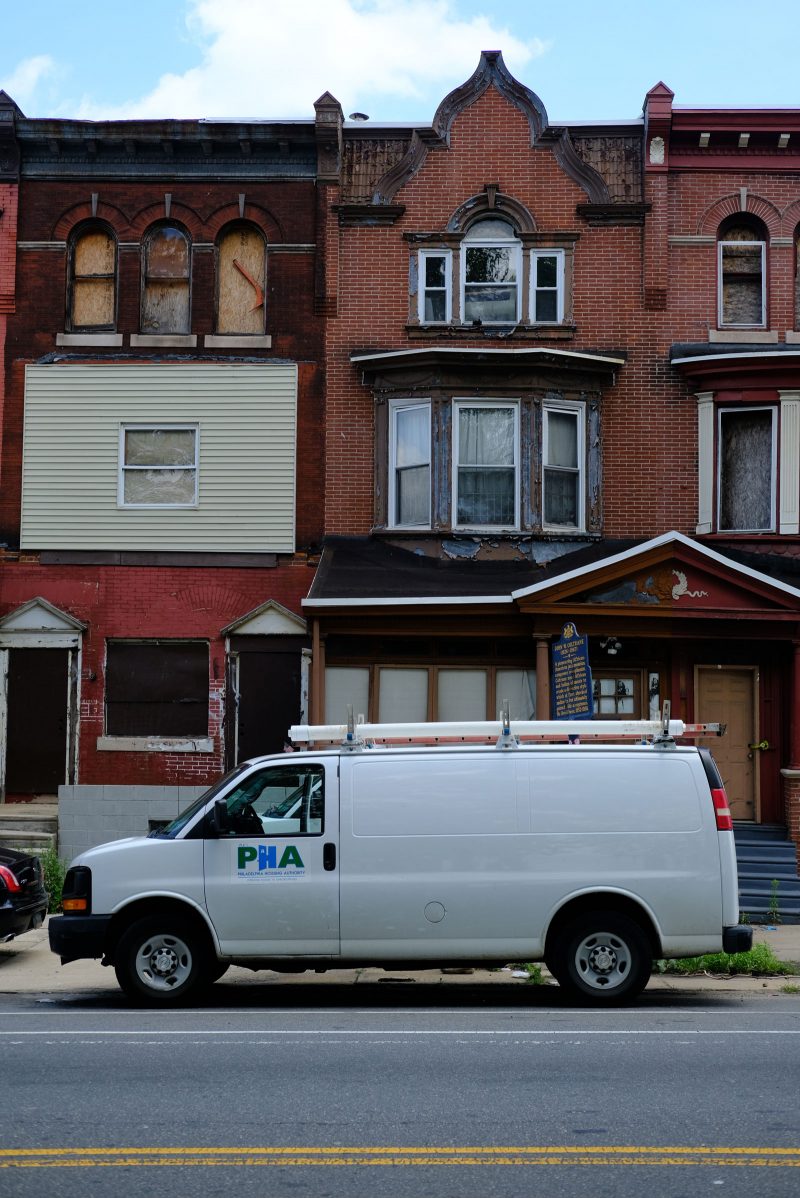
And yet, plywood obscures the windows of the house, and paint is peeling in sheets from its trim. A description of its condition reads like cliche: weeds are growing through cracks in the concrete stoop, and the sidewalk out front is littered with chip bags. In order to read the historic marker, I had to weave between three Philadelphia Housing Authority (PHA) vans that had been parked on the sidewalk directly in front of the house, nearly blocking access to the front steps.
As I stood out front taking pictures, a contractor next to one of the vans asked what I was doing. I told him that I was taking pictures of the John Coltrane house. Meanwhile, several PHA workers emerged from the rowhouse two doors down, at 1515 North 33rd. Actually, the contractor told me, that was the John Coltrane house, and the PHA was there to weatherproof it.
The contractor was wrong, but I couldn’t really blame him for the mix-up: apart from the blue historic marker and a few faded Coltrane posters taped to the inside of the glazing in the front door, there was nothing suggesting that 1511 N 33rd St was any more or less special than 1515, let alone that it is one of the most important historical sites in Philadelphia. And, to the contractor’s credit, wouldn’t it make more sense for the city to send three vans and a crew of contractors to weatherproof a National Historic Landmark, not the boarded-up shell of a house a couple doors down?
The contractor, like the music bloggers who applauded the Sun Ra house’s historic designation, had unwittingly served a narrative that should be debunked: the City of Philadelphia is not, in fact, doing what is necessary to preserve these historic sites.
Last year, it was falsely reported that the Coltrane house had been demolished. The record was quickly corrected, but the rumors were grounded in real threats to the house’s survival. There was a fire in the two rowhomes to the north, 1513 and 1515. Then the property at 1509 was sold, and the new owner, a faceless LLC, sought a demolition permit; the house still stands, but on shaky ground.
Even before all that, in early 2020, the Coltrane house was deemed “at-risk” by Preservation Pennsylvania. Faye Anderson, director of All That Philly Jazz, nominated the property for the list of at-risk sites, hoping that an official acknowledgement of its dilapidation might encourage the city to do something.
This was not the first time that an advocate had asked for help on behalf of the Coltrane house. In 1987, Mary Alexander (1927-2019), the cousin of Coltrane who had by then founded the now-defunct John W. Coltrane Cultural Society, wrote to the Philadelphia Historical Commission. “We are very much concerned about the condition of our property (The John Coltrane House),” she said in a letter provided to me by Anderson. “The building seems to be crumbling inside. Please advise us as to what can be done about this. For two years we have tried to get someone to look into this matter.” (Alexander underlined the word in the original typewritten letter.)

According to Anderson, that “someone” could be Mayor Jim Kenney. He could compel the Department of Licenses and Inspections to conduct a structural assessment of the house, for which they do not need the owner’s permission. A conservator could then petition the Court of Common Pleas to take possession of the property. The Coltrane house, like the Sun Ra house, needs a benefactor.
In 2004, Mary Alexander sold the property to Norman Gadson, who wanted to turn it into a hub for jazz in Philadelphia. After Gadson’s death in 2007, his wife, Lenora Early, prepared to renovate the house, but she passed away before realizing the plans. Responsibility for the house has now passed to Gadson’s daughter, Aminta Gadson. She started a nonprofit in order to raise funds for preservation efforts, but the organization’s website has not been operational since the end of 2020.
Last spring, the Strawberry Mansion Community Development Corporation (SMCDC) completed the John Coltrane Museum and Cultural Arts Center Site Feasibility Study, which included assessments of the property and preliminary designs for a museum. The study, produced in partnership with the current owners and funded by the Community Design Collaborative, projected development costs in the range of $3 million to $5 million.
In a May 3, 2021, press release, Aminta Gadson sounded optimistic. “We hope and pray that as future stewards, SMCDC, can restore [the John Coltrane house] and share [it] with jazz fans worldwide,” she said. The most recent news on the project, from March of this year, is that the feasibility study won the John Gallery Community Action Award from the Preservation Alliance of Greater Philadelphia. Whether or not the millions of dollars needed for development will materialize behind the award-winning feasibility study is unclear.
Historical preservation in Philadelphia is failing Black neighborhoods
What is clear, however, is that historic preservation is not a priority in Philadelphia. Our historical commission is smaller even than that of a city like New Orleans, which has a third of the population, and less than 3% of buildings in Philadelphia are listed on the Register. The national average is twice that number.
Facing particular neglect is the city’s Black history. That is because historic preservation in Philadelphia suffers from a sort of de facto redlining, but in reverse: if you look at the city’s digital map of historic properties, certain neighborhoods are filled with actual red highlights, indicating addresses listed on the Register, and others are nearly bare. Most of those empty spaces are Philadelphia’s Black neighborhoods. While Society Hill, Old City, and Rittenhouse—all wealthy, mostly-white Center City neighborhoods—are dense with color, Strawberry Mansion, which is more than 90% Black, has five highlighted addresses. The North Philadelphia planning district contains 57 sites on the Register; Center City, in a smaller area, has 19,786.
Of course, much of this disparity is due to the fact that neighborhoods like Old City are, quite simply, older. There will obviously be more properties on the Register in neighborhoods built around the time the Constitution was signed than in those built a century and a half later. But most of the houses in Strawberry Mansion and the surrounding neighborhoods are now over one hundred years old. And according to the Historical Commission’s criteria for designation, a building’s age is irrelevant, so long as it is related to a historical event or person, is the work of an important designer, “exemplifies innovation,” or satisfies one of the other criteria.
Is it that nothing much of note happened in North Philly and other majority-Black neighborhoods in the city? No, of course not—it’s just that very few people have paid attention.
In 2018, a house at 204 S 12th St. was nominated to be listed on the Register. It was once the home of Henry S. Minton, a prominent Black abolitionist and restaurateur; John Brown slept there shortly before his raid on Harpers Ferry.
When the nomination came before the Historical Commission in 2019, it was rejected. The lone dissenting vote in favor of historical designation came from the representative for City Council President Darrell Clarke, who happened to be the only Black member of the Commission at the time. The Commission ruled that, following a renovation completed two months after the Minton family sold the house, the facade of the building had changed too much to satisfy the criteria for designation (nevermind the other historic sites, like the Betsy Ross house, whose facades were altered and still found a place on the Register).
Last year, the Minton house was demolished by Midwood Investment & Development, a New York City-based real estate company. According to their website, Midwood “celebrates the context and history of neighborhoods by developing buildings with thoughtful and tasteful design.”
The rejection of the Minton house’s nomination is a clear failure of historic preservation and a product of the Historical Commission’s confused priorities. Thousands of historically unremarkable homes in Rittenhouse, Fitler Square, Society Hill, and Old City have been protected from demolition because they are old, expensive, and have facades that have remained intact over the years. What happened inside the Minton house—visits by the likes of John Brown and Frederick Douglass, for example—is evidently less important than whether or not the front door has moved since 1893.
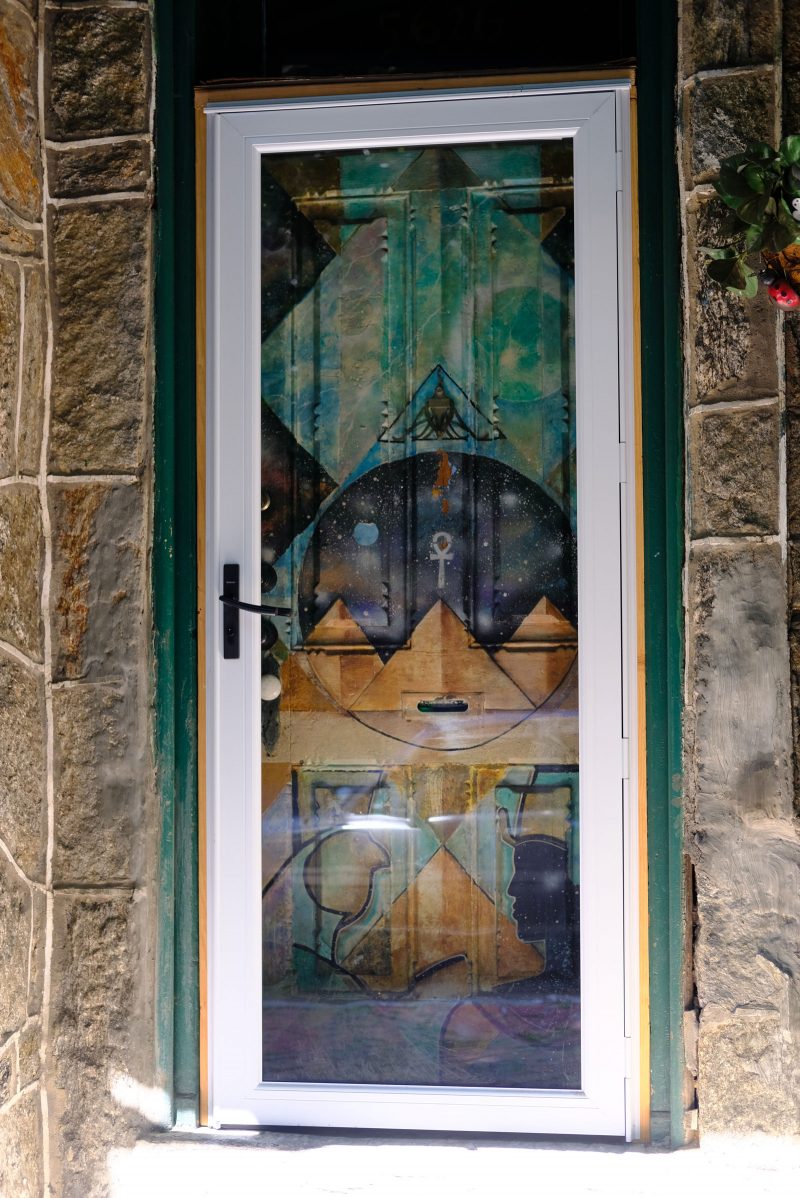
The facade of the Sun Ra house is beautiful, with its mural and sparkling schist, but the property is only on the Register because of the art that was created inside. Sun Ra’s music imagined a boundless, intergalactic future for Black people that was rooted in ancient Egyptian mythology; Afrofuturism has long borrowed ideas from the past in order to picture what is yet to come.
What is at stake in the preservation of Philadelphia’s jazz history, then, is not just the city’s memory—and its Black history in particular—but also its cultural and artistic future. Let us imagine it for a moment, as an Afofuturist might: The plan to turn the Coltrane house into a museum and cultural center is realized. Backyard jazz concerts, once held by the John W. Coltrane Cultural Society, are revived, and passersby on 33rd St. can again hear saxophones through windows no longer covered by plywood. In Germantown, the Sun Ra house is repaired and continues to serve as a practice and performance space—a commune, as Marshall Allen described it—for artists from Philadelphia and beyond. Young musicians stop by to jam alongside Allen and the rest of the Arkestra. The past becomes the future.
Or, business continues as usual. Leaks in the roof of the Sun Ra house cause beams to rot, and its historical designation makes replacing the roof prohibitively expensive. The Arkestra moves out because of concerns about another collapse. Strawberry Mansion continues to host weddings and banquets in its immaculate halls and gardens, but a mile down N 33rd St., a demolition is underway. Not at 1511, yet, but at 1509—the property attached to the Coltrane house. The millions of dollars projected in the award-winning feasibility study for the museum and cultural center do not materialize, and more windows are boarded up at the Coltrane house. Neither the Sun Ra house nor the Coltrane house is demolished—the Register at least ensures that—but they both become lifeless. Houses fall apart, their memories fade, and the past remains the past.






